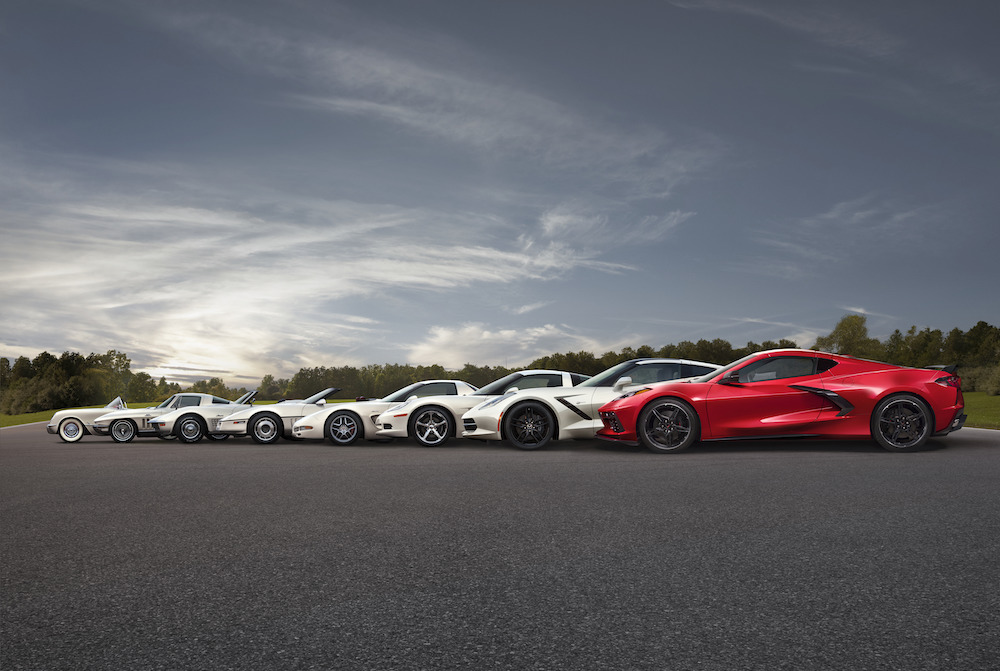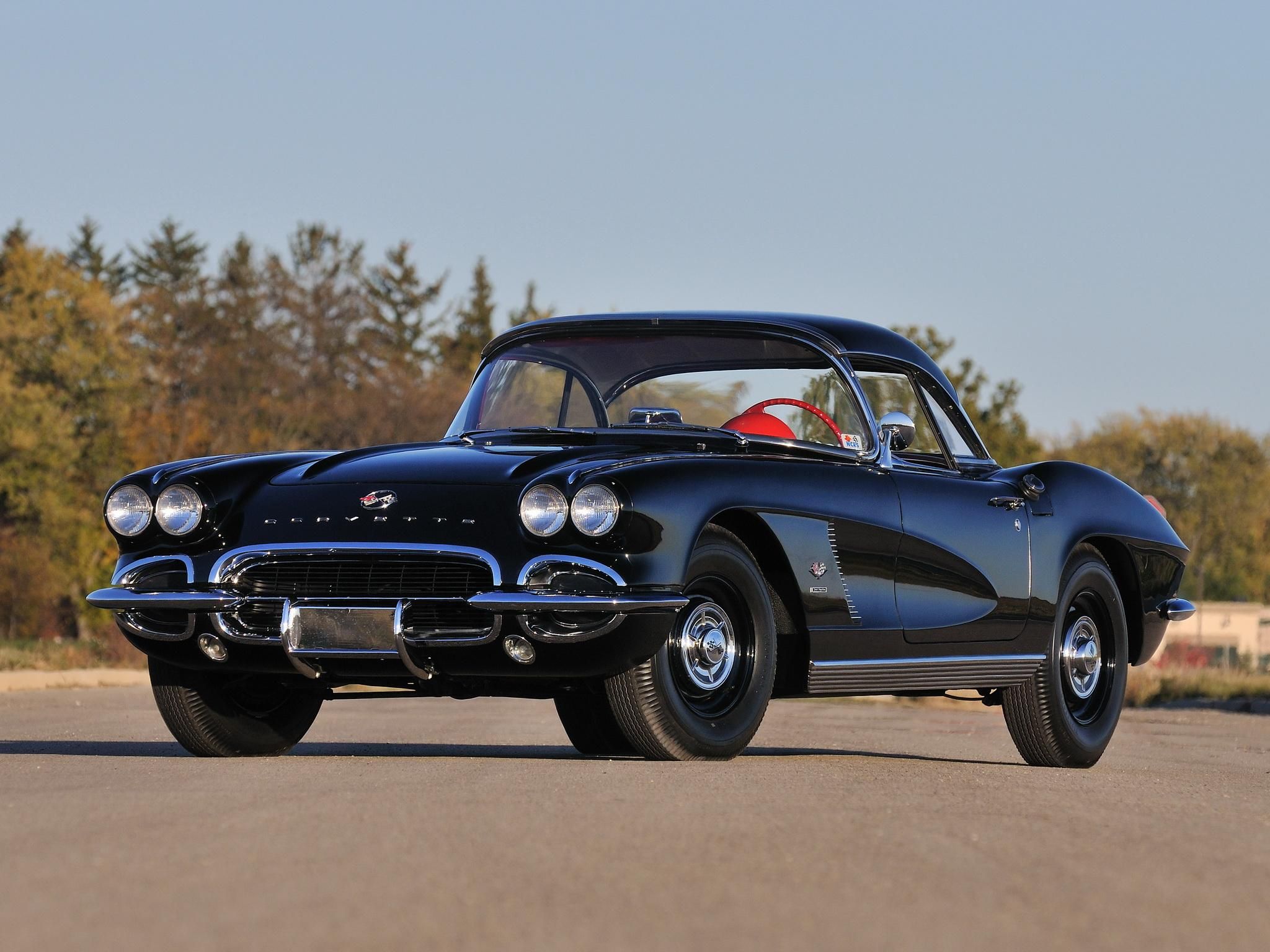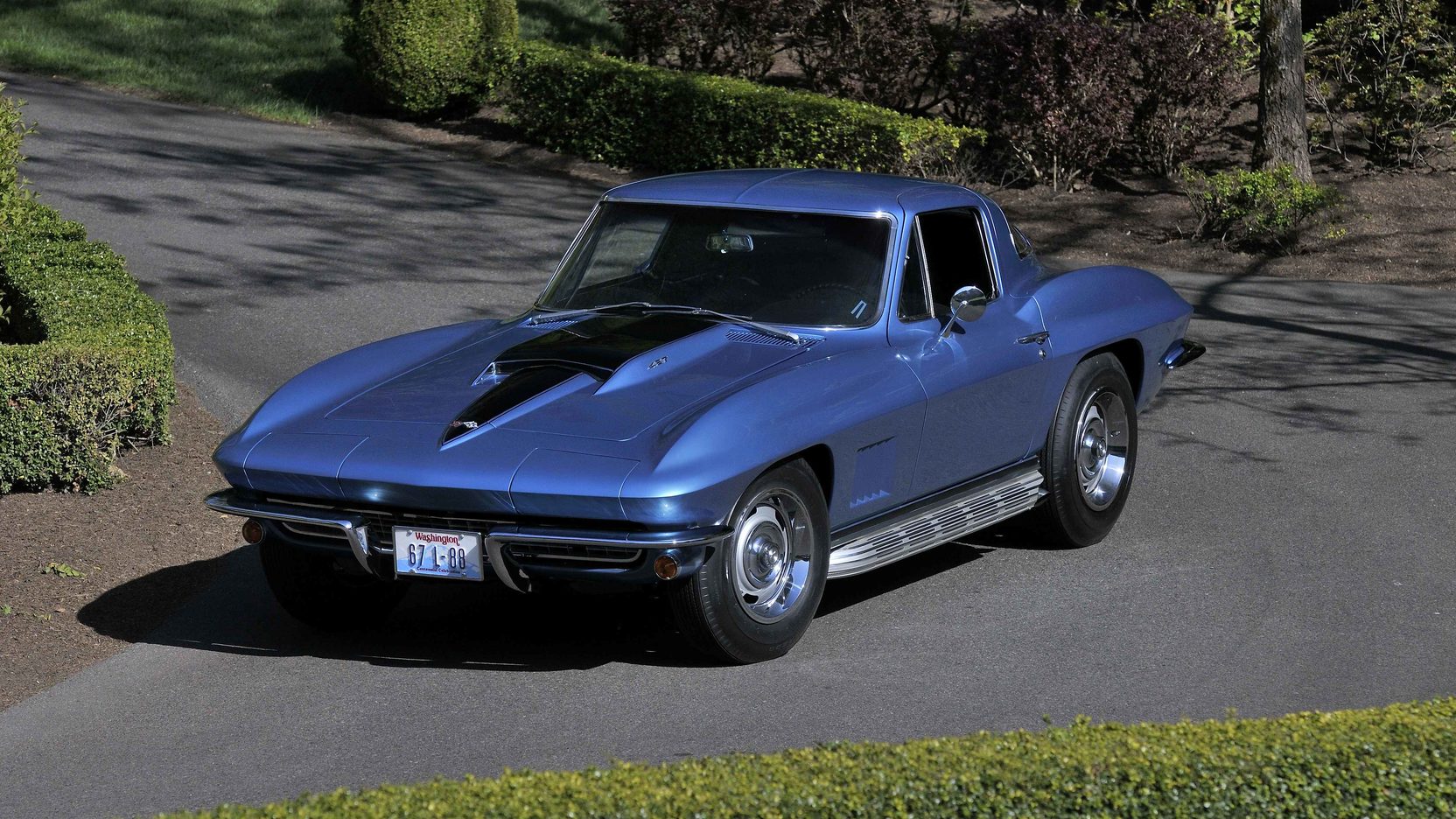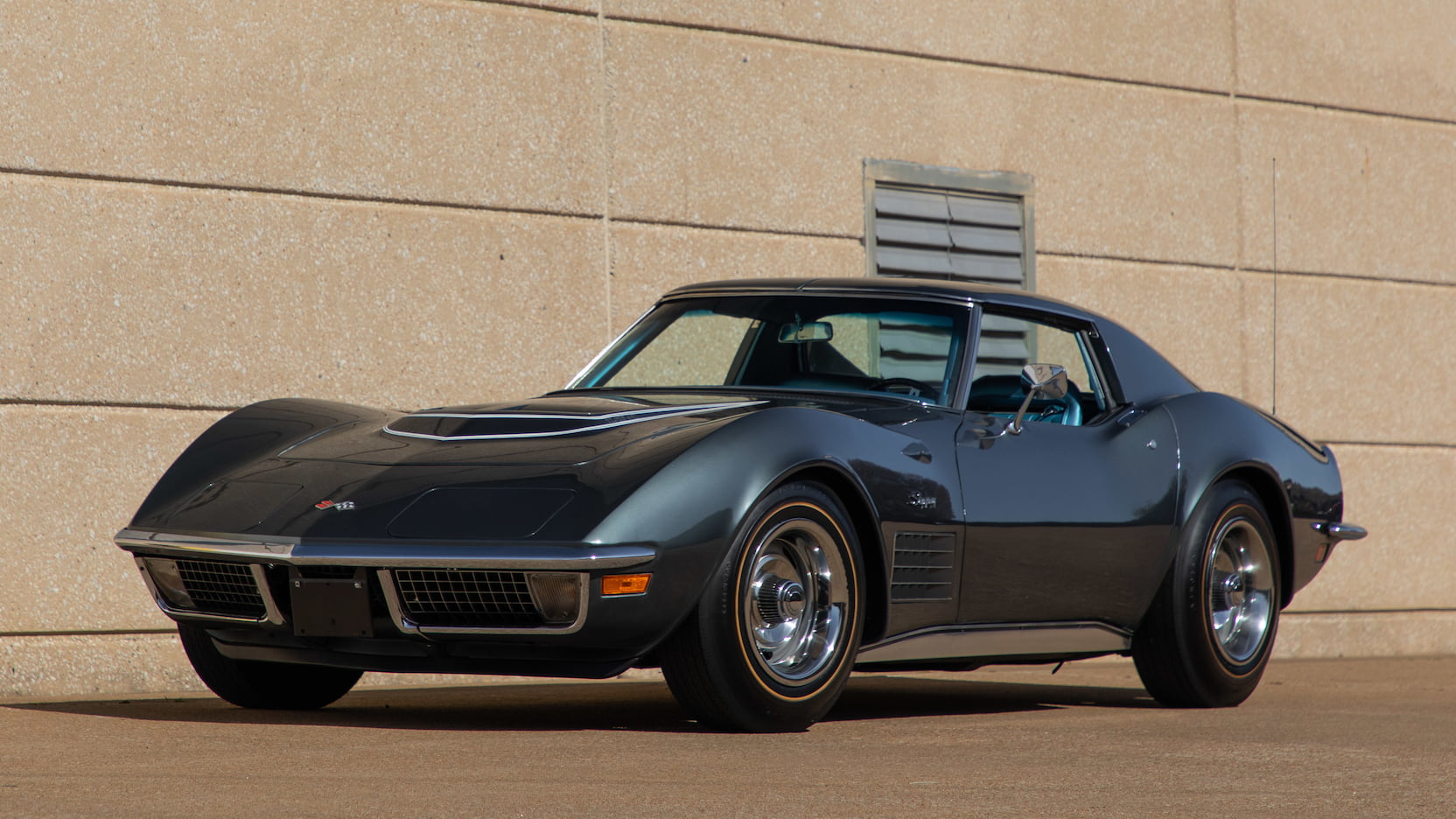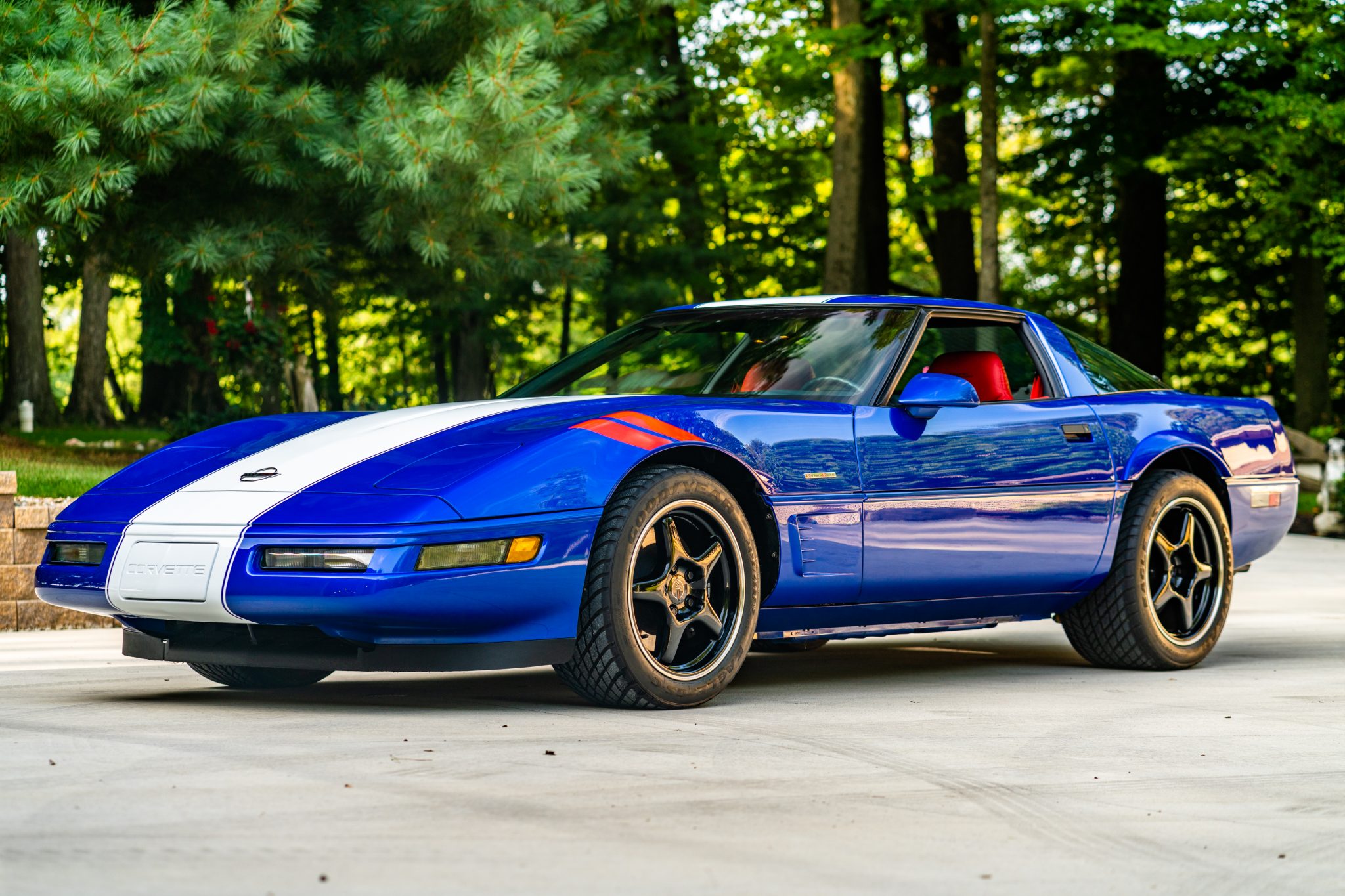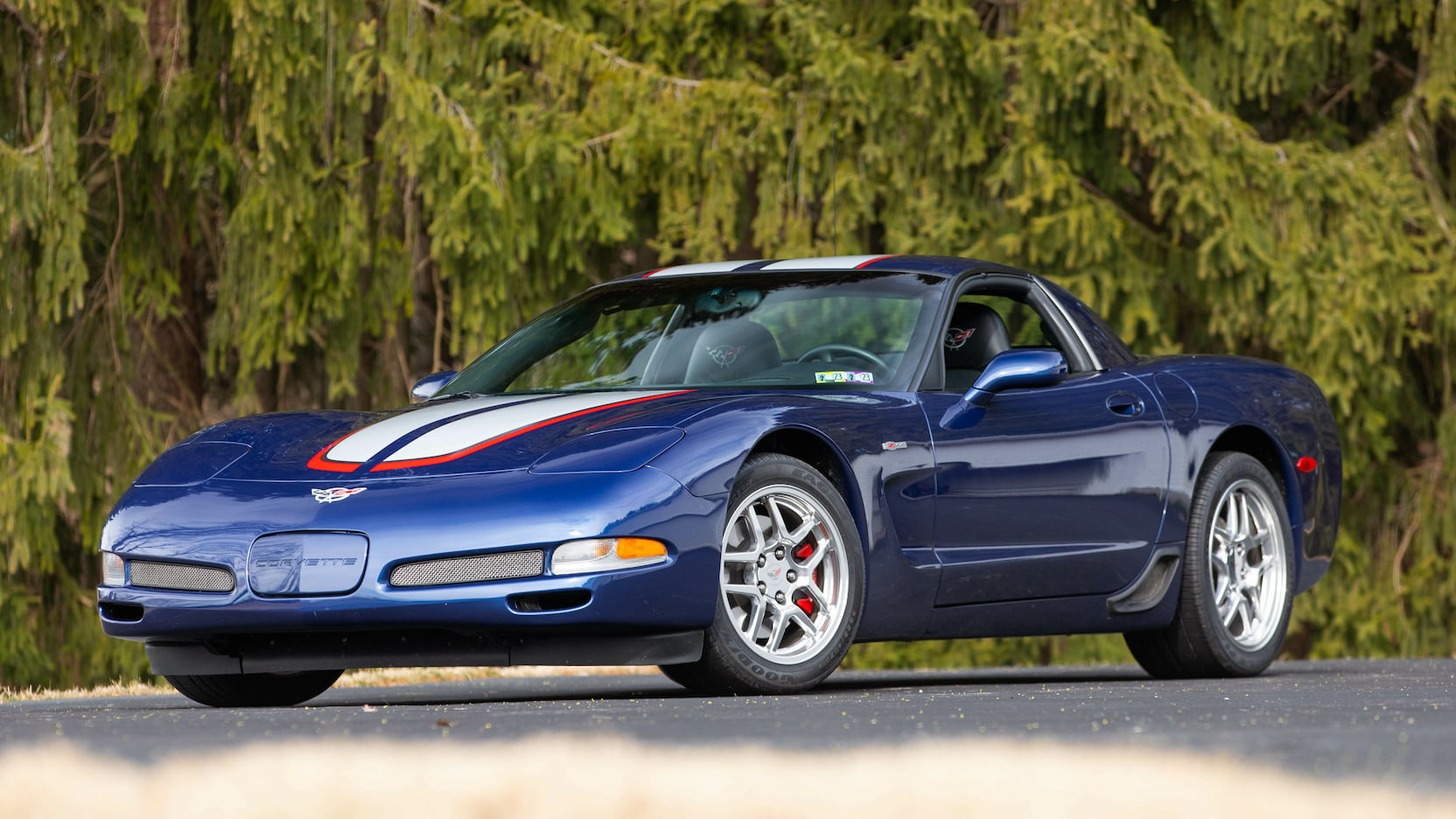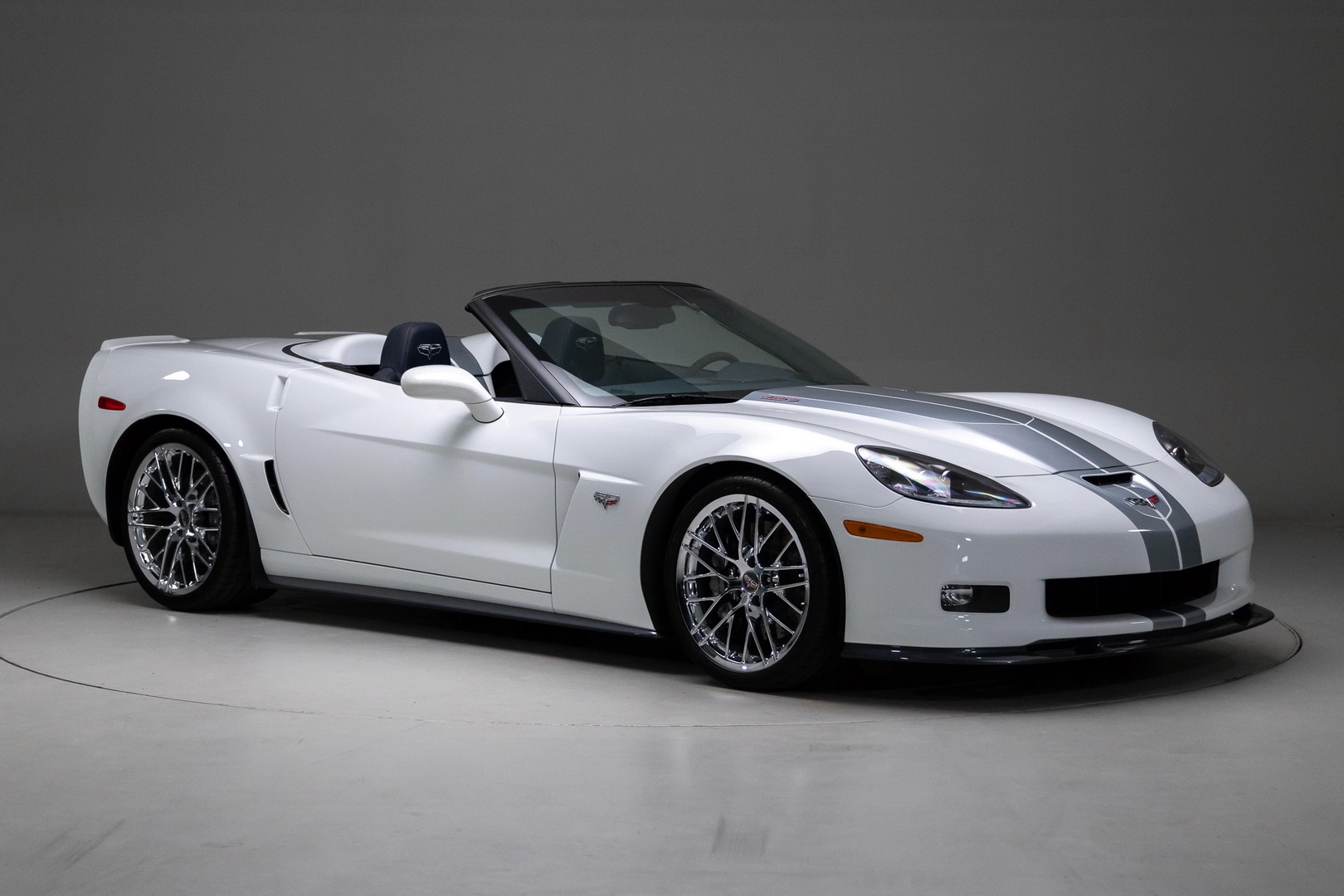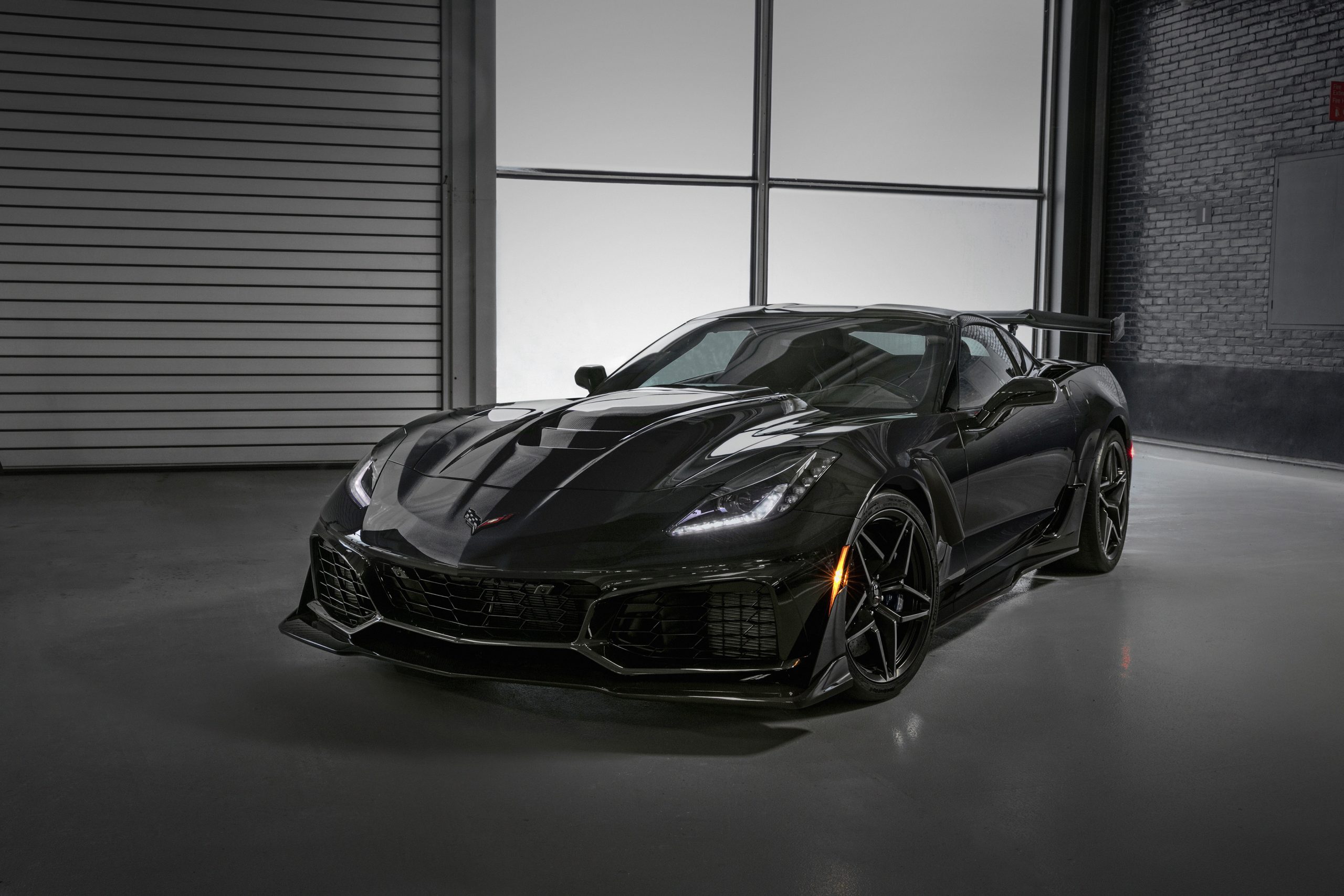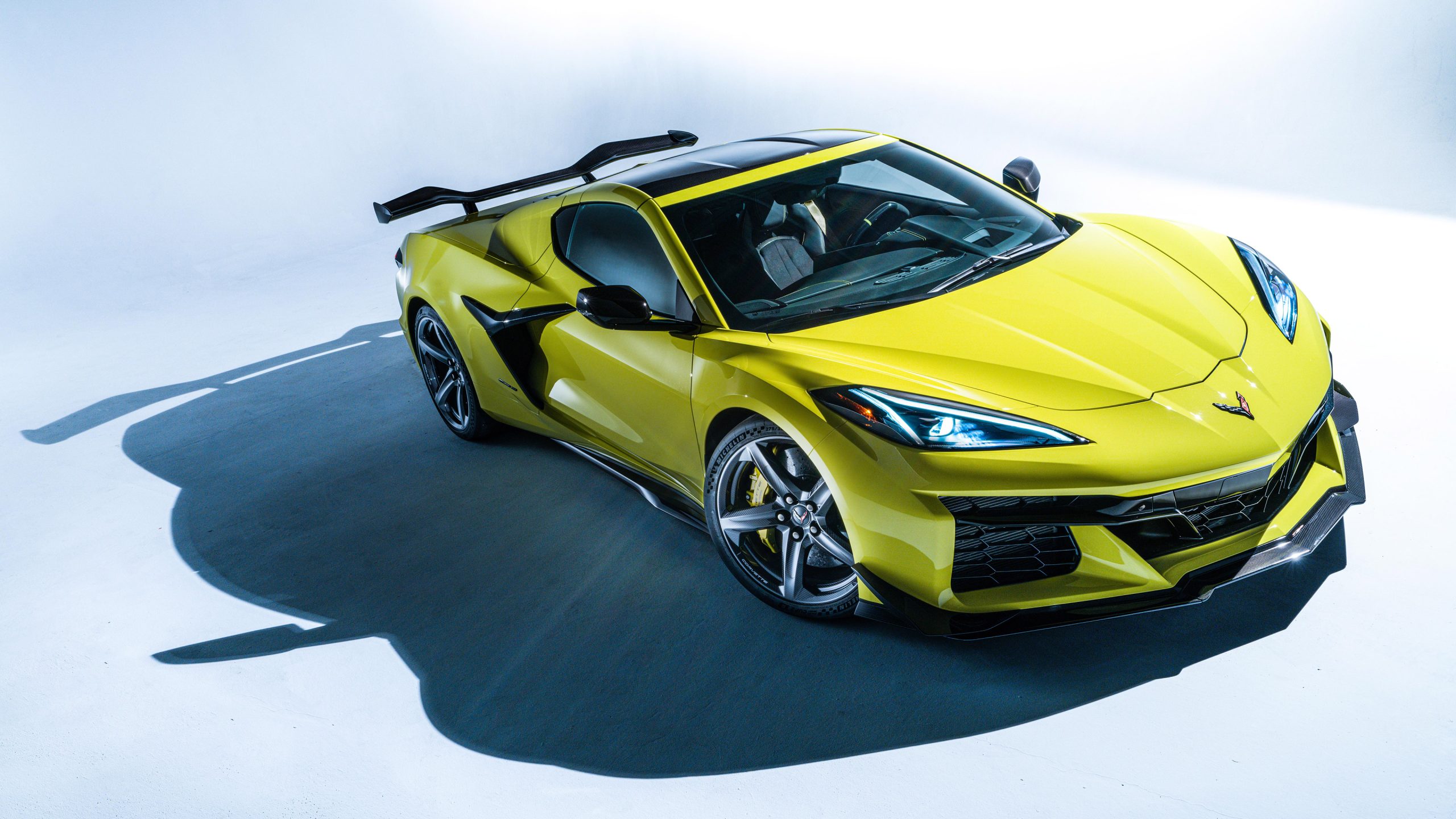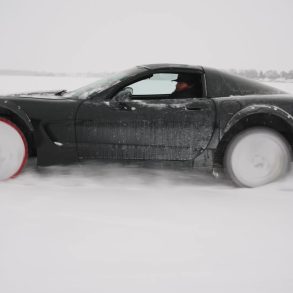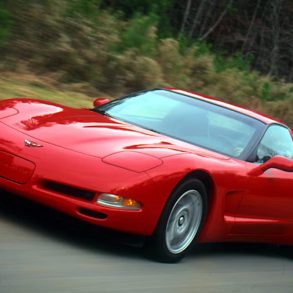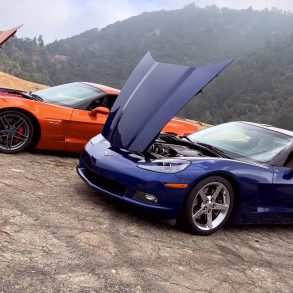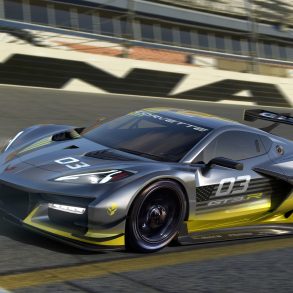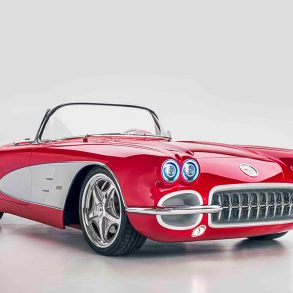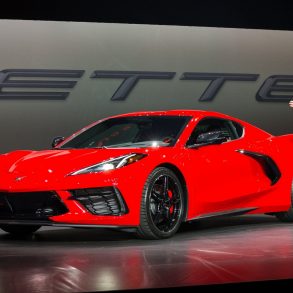Our Definitive List of the Best Corvette from Each Generation
They say that “beauty is in the eye of the beholder.” While we know this is true with most things, it is most definitely true when selecting the best Corvette from each generation (C1 thru C7). However, not all of the cars in this review are just beauties – many of them are also BEASTS! Whether admiring the early-generation Corvettes or reveling at the power and technology packed into many of the current models, every generation of Corvette featured some truly beautiful – and POWERFUL – variants.
Best C1 Corvette – The 1962 Corvette
The first model year to incorporate the 327 cubic-inch V8 engine
Many Corvette enthusiasts say that the 1962 Corvette is the best model-year of its generation. We are inclined to agree. The 1962 Corvette was the first model year to incorporate the 327 cubic-inch V8 engine in place of the smaller 283 cubic-inch engine. Though technically the same engine block as the 283, the smaller engine was bored and stroked to bring its cylinder dimensions to 4.00 x 3.25 inches and it’s displacement up to 327 cubic inches. The larger 327 V8 produced more horsepower and torque than any Corvette powerplant that came before it.
Aesthetically, the 1962 Corvette had a more refined look than any of the other Corvettes that came before it. This final variation was stripped of the remaining excesses that had plagued it’s earlier counterparts.
The most obvious of these deletions was the removal of the chrome outlines that had framed the body side coves since 1956. Further, the chrome accent spears (that had accentuated the side vents within the coves) were also removed and replaced by more conservative aluminum blades that were finished in black. Additionally, the side coves of the car were painted to match the rest of the exterior. This gave the car a more cohesive appearance.
Despite it’s origins and it’s undeniable ties to the very first Corvette, the 1962 was faster, handled better, was more physically appealing and was the most completely realized and refined Corvette of its generation.
Best C2 Corvette – The 1967 L88 Corvette
Highly modified 427-cubic-inch V8 engine with very conservative 435 horsepower
The 1967 L88 Corvette is not only one of the best Corvettes of its generation, it is also considered by many to be one of the best Corvettes of all time. The L88 was introduced in 1967 as a special option package that had been developed under the direction of Zora Arkus-Duntov. The car featured a highly modified version of Chevy’s 427-cubic-inch V8 engine that boasted a very conservative 435 horsepower (though actual engine output has since been estimated at between 540 and 580 horsepower!)
Duntov developed this variant of the Corvette specifically for racing. Despite General Motors agreement to comply with the AMA’s (American Manufacturers Association) ban on factory-backed race cars, Duntov was passionate about developing a Corvette that could contend with brands like Ferrari and Porsche.
The L88 Corvette was his vision made a reality. In addition to massive horsepower, a number of weight-and-power saving measures were included with the L88 package. “Creature comforts” including power steering, air conditioning and even the car radio were deleted when the L88 option was selected by would-be owners. Instead, each car received a heavy-duty M22 four-speed transmission, a performance suspension package, a Positraction rear differential, upgraded brakes including heavy-duty disc brake calipers and a transistor ignition.
Because of the AMA ban, General Motors “discouraged” consumers by publishing language in the sales literature that warned would-be consumers that this Corvette could only run on racing-grade gasoline. That alone was enough to deter many casual enthusiasts from purchasing the L88 package. Even more discouraging was the added cost of $1,500 to the car’s base price of $4,240.75 (that would be the equivalent of $11,551.26 today (at the time of this publication.)) As a result, most of the early L88 Corvettes were built for racing teams. While versions of the L88 Corvette were also manufactured in 1968 and 1969, just twenty of the 1967 L88 Corvettes were manufactured, making this variant of the C2 ultra-rare and incredibly valuable in today’s collector’s car market.
Best C3 Corvette – The 1970 Corvette LT-1
The ultimate engine package/upgrade in 1970
While not specifically a “variant” so much as an engine package/upgrade, the 1970 LT-1 Corvette nonetheless has become one of the most sought-after models of its day. In 1970, Chevrolet introduced a small block, 350-cubic-inch,V8 engine that was capable of producing 370 horsepower. Designated the LT-1, this small-block engine was developed to rival the power output of its big-block counterparts while also introducing weight-saving measures because of its smaller mass/size.
Although 370 horsepower was the LT-1’s “official” rating, most Corvette enthusiasts felt that this was a very conservative estimate of the car’s actual power. The LT-1 equipped Corvettes could manage a quarter-mile run in just 14.2 seconds with a top speed of 102 miles per hour, strongly suggesting that the engine was probably producing closer to 400 horsepower. However, with stiffer emission regulations and the ever increasing cost of insurance, the lesser horsepower number remained the official published rating.
Corvettes equipped with this engine received a special hood dome surrounded by striping and “LT-1” lettering. While these markings were certainly a differentiation between which engine a particular Corvette was equipped with, it was also readily obvious to anyone who heard the unique rumble from the exhaust pipes and the tapping of its mechanical lifters that they were in the presence of an LT-1 engine.
The 1970 Corvette LT1 was specified for use in the SCCA’s Class B Production car series. For racers wishing to purchase a Corvette so equipped, they would need look no further than the factory order sheet and select the correct options, which included the LT-1 engine as well as a cold-air hood and all of the relevant brake and chassis racing equipment.
Best C4 Corvette – The 1996 Corvette Grand Sport
A fitting special edition send off to the fourth generation model
Although there are a number of fourth-generation Corvettes that made an “indelible mark” on the history of the brand, there is no other Corvette from this era as remarkable as the 1996 Corvette Grand Sport. Chevrolet introduced the Corvette Grand Sport special edition as a send off to the fourth generation model. Each car came finished with an Admiral Blue exterior featuring an Arctic White stripe and red hash marks on the left-front fender. This unique paint scheme was deliberately developed by GM to pay homage to the classic Corvette Grand Sport Racer of the 1960’s.
The Grand Sport’s interior upholstery was offered either in an all black or a sporty red/black combination, and all of the Grand Sport interiors featured a specialized embroidered headrest which featured the Grand Sport emblem.
All of the 1996 Corvette Grand Sports were equipped with the newly revised 33o horsepower LT4 5.7 liter small-block V8 engine. Each engine received a special “dress” kit that included bright red paint and red ignition wires. All Grand Sports –both coupes and convertibles- were also equipped with a six speed manual transmission.
In all, Chevy built 1,000 Grand Sports – 810 were coupes and 190 were convertibles – and each was given a special, sequential serial number. While many of the C4 Corvettes have depreciated considerably over the past twenty years, the 1996 Corvette Grand Sport Corvettes continue to command an asking price in the used market that is comparable to when these cars were new.
Best C5 Corvette – The 2004 Commemorative Edition Corvette
Designed to pay homage to Corvette’s successful return to racing
The 2004 Commemorative Edition Corvette was specifically designed to pay homage to Corvette’s successful return to racing. All the Commemorative Edition Corvettes (including the coupe, convertible and Z06 models) were finished in a striking LeMans Blue paint with red-edged silver stripes that adorned the hood, roof and rear deck lid. Special “LeMans 24-hours” emblems featuring Corvette’s iconic crossed-flags trademark appeared on the nose and the tail of the car, and a matching emblem was embroidered into the headrests of the custom shale color interior leather seats.
Completing the commemorative package on all of the specially equipped coupes and convertibles was the introduction of polished alloy wheels. This option, which could be ordered as part of the regular 1SB Preferred Equipment group, was also made available – at a moderate additional cost of $3,700 for either the coupe or convertible upgrade.
The Z06 Commemorative Edition was a little more costly. However, it also included a few additional upgrades over the base coupe and convertible. Priced at an additional $4,335 (when new), the Commemorative Edition option for the Z06 Coupe included a unique carbon-fiber hood that reduced the nose weight of the car by 10.6 pounds.
Beyond the car’s hood, clear coat wheels with hubs reading “Commemorative 24:00 Heures du Mans” were also added to the Z06 package upgrade. Additionally, a black interior was once again featured as part of the Z06 Commemorative Edition package, just as it had been on the 50th anniversary commemorative edition.
Best C6 Corvette – The 2013 Corvette 427
Took Corvette convertible performance to an entirely new level
Evoking the heritage of early 427-powered Corvettes, the 427 Convertible Collection edition model took Corvette convertible performance to an entirely new level. It combined the convertible found in the base model and Grand Sport editions, and fused it with elements from the Z06 and the ZR1 Corvettes, making it the fastest and most-capable convertible in Corvette’s history. The car’s powertrain is the same as the Z06 coupe, including its 505 horsepower, 427 cubic-inch LS7 engine with dry sump. Also like the Z06 Corvette, the 427 Convertible was only offered with a manual transmission.
With a curb weight of just 3,355 pounds (1,522 kg), the 427 Convertible was designed to be lighter than other 2013 Corvette convertibles. Combined with the LS7 engine, the Corvette 427 Convertible produced a power-to weight ratio of 6.64 – or hone horsepower for every 6.64 pounds of vehicle mass. Comparatively speaking, that’s a better power-to-weight ratio than that found in an Audi R8 Spyder or a Ferrari California. This combination of low mass and high output made the 427 Convertible one of the fastest convertibles in the world, deliver an estimated 0-60 performance time of just 3.8 seconds, a quarter mile time of just 11.8 seconds, a lateral acceleration of 1.04 g and a top speed of more than 190 miles per hour!
All 427 Convertibles came equipped with a manual transmission, 427 hood badging, ZR1-style rear spoiler, and carbon-fiber hood, fenders and floor panels. Wheels were machine-face cup style (black cup wheels and chrome ZR1 wheels were optional) and included nineteen inch wheels up front and twenty inch wheels in the back.
Best C7 Corvette – The 2019 Corvette ZR1
One of the fastest, most powerful Corvettes in the history of the brand
Introduced in 2019 as a send-off to the much-loved seventh-generation Corvette Stingray, the C7 ZR1 Corvette is the fastest, most powerful Corvette in the history of the brand.
The 2019 Corvette ZR1 featured an LT5 6.2L V-8 supercharged engine which dramatically advanced the supercharging technologies first introduced in the 2009 sixth-generation Corvette ZR1. The engine, which is officially rated with an SAE-certified 755 horsepower (563 kW) and 715 lb-ft of torque (969Nm), established an entirely new benchmark in Chevrolet performance. Mated to the LT5 engine was either a seven-speed manual transmission or an optional eight-speed automatic transmission. The introduction of an automatic transmission on the ZR1 was a first for the seventh-generation iteration of the Corvette supercar.
The 2019 Corvette ZR1 incorporates the highest percentage of carbon fiber components of any Chevrolet vehicle to date. A special carbon-fiber “halo” hood with a uniquely designed central opening was developed to clear the LT5 engine’s supercharger/intercooler assembly.
What makes this Corvette truly incredible is what it can do – especially in the hands of a professional GM performance driver. The car has a 0-60 time of just 2.8 seconds, a quarter mile time of just 10.1 seconds at 134 mph, a standing mile at 190 mph with the wing removed and a top speed of 214 mph with the low downforce package. It ran wide open for 24 hours straight at Virginia International Raceway, stopping only to change fuel and tires, demonstrating the car’s endurance and durability, even under extreme driving conditions. In the process of running 24 hours at VIR, the 2019 Corvette ZR1 “accidentally” set a new record, running its fastest lap 1.37 seconds quicker than the Ford GT did at the same track barely a week before.
The 2023 Corvette Z06 (C8)
Chevy builds a Ferrari 458 Speciale. WOW, just WOW.
The 2023 Z06 was designed and engineered to be a “precision tool” for the race track. While the DNA of every modern Corvette evolved from its racing car heritage, the new Z06 has blurred the lines between street car and race car to such an extent that it is hard to decide which environment this car is best suited for. Everything about this car – from its outward aesthetic, to its wider front and rear fascias, its exotic proportions, and its luxuriously appointed interior – all state unequivocally that the 2023 Z06 is not just a Corvette – but a car thats fully capable of holding its own in the supercar stratosphere.
“Corvette has always brought a discerning customer to the Chevy family,” said Steve Hill, vice president of Chevrolet. “This new Z06 was designed and engineered to set a higher bar with increased levels of craftsmanship, personalization and performance so customers can truly have their own bespoke performance car.”
An all-new 5.5L LT6 engine sits at the heart of this beast. Rated at an incredible 670 horsepower, this NATURALLY ASPIRATED V8 is the most power engine of its kind to be introduced in ANY production car….EVER. The LT6 features an all-new, lightweight, flat-plane crankshaft designed to rev the engine to a staggering 8,600 rpm. It’s at this point that the engine hits its peak horsepower. Where past iterations of the Z06 relied heavily on superchargers to achieve this level of horsepower, Chevrolet’s engineers recognized an opportunity to return to a naturally aspirated engine without compromising horsepower or responsiveness. In fact, engine responsiveness and trackability were both identified as top priorities for the eighth-generation Z06.


